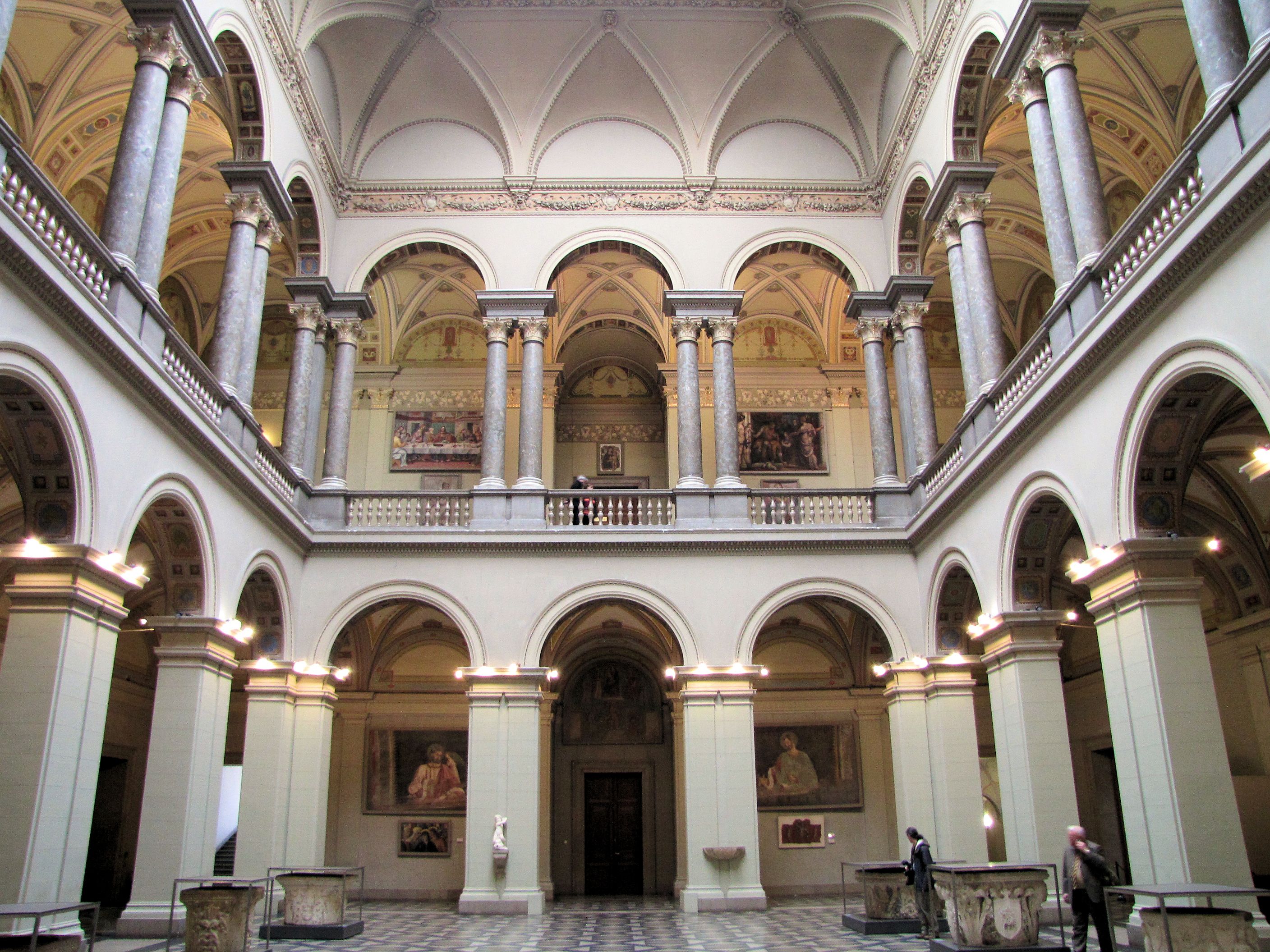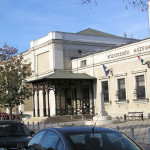
Szépművészeti Múzeum
The Museum of Fine Arts (Hungarian: Szépművészeti Múzeum) is a museum in Heroes’ Square, Budapest, Hungary, facing the Palace of Art.
It was built by the plans of Albert Schickedanz and Fülöp Herzog in an eclectic-neoclassical style, between 1900 and 1906. The museum’s collection is made up of international art (other than Hungarian), including all periods of European art, and comprises more than 100,000 pieces. The collection is made up of various older additions such as those from Buda Castle, the Esterházy and Zichy estates, as well as donations from individual collectors. The Museum’s collection is made up of six departments: Egyptian, Antique, Old sculpture gallery, Old painter gallery, Modern collection, Graphics collection. The institution celebrated its centenary in 2006.
Ancient Egyptian art
The gallery holds the second largest collection of Egyptian art in central Europe. It comprises a number of collections bought together by Hungarian Egyptologist Eduard Mahler in the 1930s. Subsequent digs in Egypt have expanded the collection. Some of the most interesting pieces are the painted mummy sarcophagi.
Classical antiquities
The core of the collection was made up of pieces acquired from Paul Arndt, a classicist from Munich. The exhibition mainly includes works from Ancient Greece and Rome. Most significant is the 3rd century marble statue called the Budapest dancer. The Cyprean and Mycenaean collection is also notable, also the ceramics and bronzes.
Old master paintings (13th to 18th centuries)
The 3000 paintings in the collection offer an almost uninterrupted survey of the development of European painting from the 13th to the late 18th centuries. The core of the collection is constituted by the 700 paintings acquired from the Esterhazy estate. The collection is split up into Italian, German, Netherlandish, Flemish, French, English and Spanish art. The most important works include Maso di Banco’s Coronation of the Virgin, Sassetta’s Saint Thomas Aquinas at Prayer, Domenico Ghirlandaio’s Saint Stephen Martyr, Gentile Bellini’s Portrait of Caterina Cornaro, Giorgione’s Portrait of a Young Man, Raphael’s Esterhazy Madonna, Giambattista Pittoni’s St Elizabeth Distributing Alms, Correggio’s Madonna and Child with an Angel, three works by Sebastiano del Piombo, Bronzino’s Adoration of the Shepherds as well as his Venus, Cupid and Jealousy, Romanino’s Doge Agostino Barbarigo Handing over a Banner to Niccolo Orsini, Titian’s Portrait of Doge Marcantonio Trevisani, Tintoretto’s Supper at Emmaus, Tiepolo’s St James the Greater in the Battle of Clavijo, Dürer’s Portrait of a Young Man, Bernard van Orley’s Portrait of Emperor Charles V, eight pictures by Lucas Cranach the Elder, Pieter Bruegel the Elder’s St John the Baptist Preaching, Rubens’s Mucius Scaevola Before Porsenna, two excellent portraits by Frans Hals, and a particularly strong collection of works by Spanish masters including El Greco, Velázquez and Goya.
Old Sculpture
The collection’s main section is devoted to pieces from the Middle Ages to the 17th century. It was based on the Italian collection of Karoly Pulszky and Istvan Ferenczy’s bronze collection. From the latter came one of the most treasured works, the small equestrian by Leonardo da Vinci. A number of painted wooden sculptures feature in the German and Austrian section.
Drawings and prints
The collection shows selected rotating exhibitions of its collection of 10,000 drawings and 100,000 prints originating mainly from the Esterhazy, Istvan Delhaes and Pal Majovsky acquisitions. All periods of European graphic art are richly represented. Important pieces include two studies by Leonardo da Vinci for the ‘Battle of Anghiari’, 15 drawings by Rembrandt, 200 pieces by Goya and French aquatints.
Art after 1800
The museum’s collection of 19th- and 20th-century art is less significant than those found in other departments; it is a younger collection. The bulk of the painting is from the Biedermeier period and French art. From the latter are representatives of the Romantic period (Eugène Delacroix), the Barbizon school (Jean-Baptiste-Camille Corot, Gustave Courbet) and Impressionism (Édouard Manet, Claude Monet, Camille Pissarro, Pierre-Auguste Renoir, Henri de Toulouse-Lautrec). There is a large collection of sculptures by Auguste Rodin and Constantin Meunier.
You should add a rate for this post:






 Previous Post
Previous Post